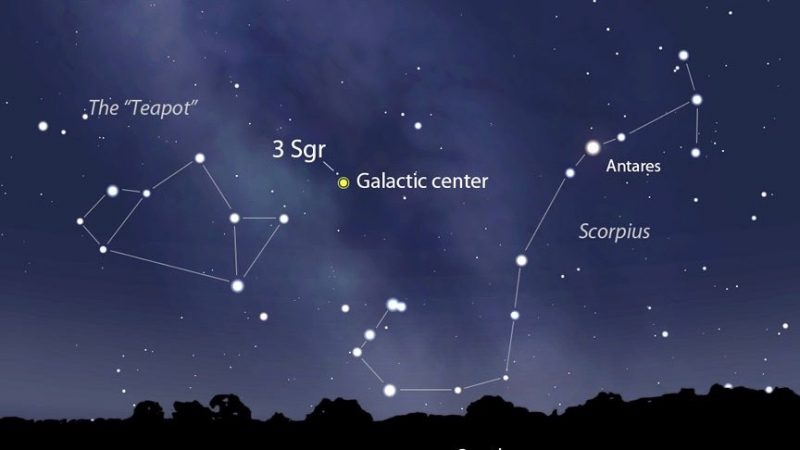

View larger. | Ruslan Merzlyakov of RMS Photography calls this image The Star Catcher. He wrote: “One of my biggest night-sky photographs, consisting of 50 images and making a total resolution of 258 megapixels. Shot during 2 nights between August 7-10, 2018.” Visit Ruslan on Instagram.
Modern stargazers have a hard time seeing a centaur with a bow and arrow in the constellation Sagittarius. But the Teapot – in the western half of Sagittarius – is easy to make out. The Teapot is an asterism, not a constellation, but a recognizable pattern of stars. It’s best viewed during the evening hours from about July to September. Find the Teapot, and you’ll be looking toward the center of our Milky Way galaxy.
How can you find it? One thing to note is that – unlike some named star patterns – the Teapot actually looks like its name. It really resembles a Teapot. As is true for nearly all objects in the night sky, you’ll find it more easily from a dark rural location. You’ll be looking southward in the evening from Earth’s Northern Hemisphere. If you’re in Earth’s Southern Hemisphere, look northward – closer to overhead – and turn the chart below upside-down. Want a more exact location for Sagittarius? We hear good things about Stellarium, which will let you set a date and time from your exact location on the globe.

The center of the galaxy is located between the Tail of Scorpius and the Teapot of Sagittarius. From the Northern Hemisphere, look southward in July and August evenings to see these stars. From the Southern Hemisphere, look generally northward, higher in the sky, and turn this chart upside down. Chart via Astro Bob.
Because the sun passes in front of Sagittarius from about December 18 to January 20, the Teapot isn’t visible then. However, about half a year later – on July 1 – the Teapot climbs to its highest point for the night around midnight (1 a.m. daylight saving time), when it appears due south as seen from the Northern Hemisphere or due north as seen from the Southern Hemisphere.
As seen from our mid-northern latitudes, the Teapot rises in the southeast about three hours before it climbs to its highest point, then sets in the southwest about three hours afterwards.
The Teapot returns to the same place in the sky about four minutes earlier with each passing day, or two hours earlier with each passing month. On August 1, the Teapot climbs to its highest point around 10 p.m. (11 p.m. daylight saving time). On September 1, it climbs highest around 8 p.m. (9 p.m. daylight saving time). On October 1, it’s highest around 6 p.m. (7 p.m. daylight saving time).
Another noteworthy point lies in this direction in space, the point at which the sun shines on the December solstice, around December 21 each year.

From the Northern Hemisphere, look southward in July and August to find the Teapot in Sagittarius. From the Southern Hemisphere, turn this chart upside down and look generally northward and high in the sky.
Bottom line: The Teapot asterism in the constellation Sagittarius is easy to spot in a dark sky. When you look in that direction, you’re looking toward the center of our Milky Way galaxy. Want more? Learn to recognize two famous deep-sky objects in this direction of space by following the links below:
Read more: M8 is the Lagoon Nebula
Read more: M20 is the Trifid Nebula
Find a dark sky location near you at EarthSky’s Best Places to Stargaze page





















